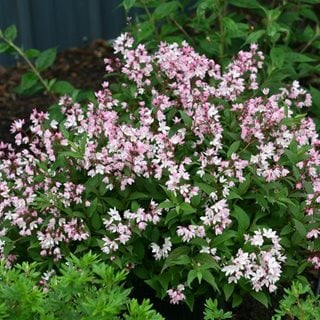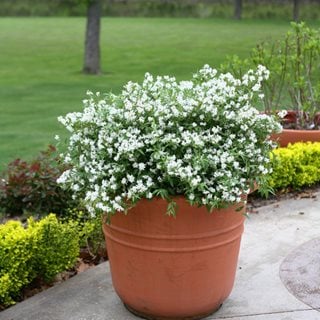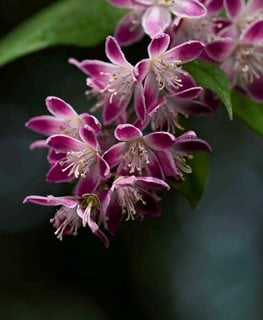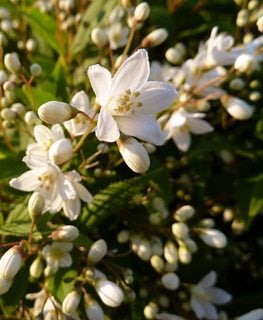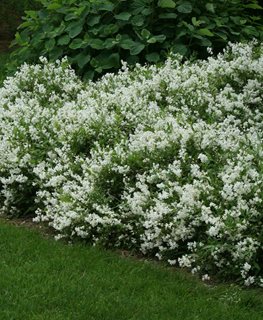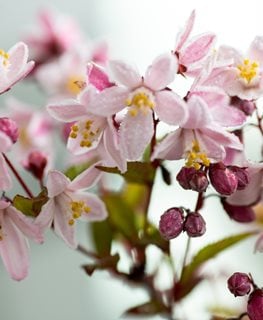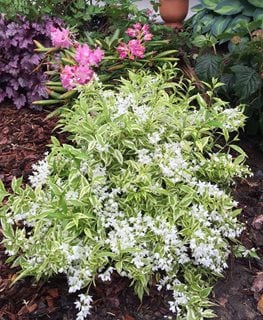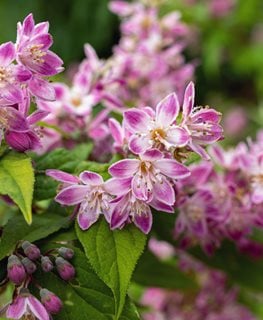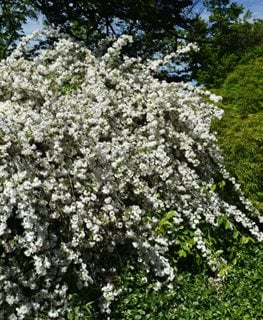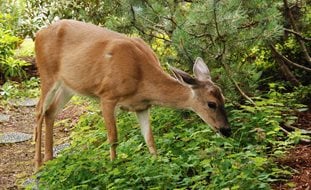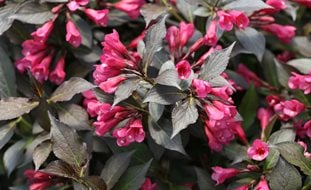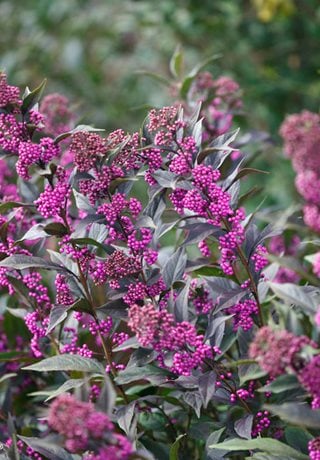How to Grow & Care for Deutzia Plants
Add this hardy carefree shrub to your landscape. Published 9/14/2022Deutzia is an often-overlooked deciduous shrub that deserves to be more widely used in the landscape. For two weeks or longer in spring, dazzling clusters of fragrant bell-shaped flowers bloom against a backdrop of finely textured foliage. A member of the hydrangea family, some deutzia varieties have fall color and exfoliating bark, offering multi-seasonal interest.
There are about 60 species of Deutzia, from dwarf ground covers to larger types up to 10 feet tall. Native to Asia and Japan, this versatile shrub can be used as a ground cover, hedging, privacy screening, in mass plantings, containers, or borders. Deutzia is virtually maintenance-free once established, with few insect or disease problems. Here’s how to grow and care for deutzia.
On this page: Basics | Planting | Care | Varieties | Landscaping Ideas
BASICS
Botanical name:
Deutzia spp.
Zones:
5-8
Plant type:
Deciduous shrub
Exposure:
Full sun to part shade
Habit:
Bushy, upright or ground cover habit
Size:
1 to 10 feet tall, 2 to 8 feet wide, depending on variety
Bloom time:
Mid spring to early summer, depending on the variety
Color and characteristics:
Deutzia is a deciduous multi-stemmed shrub with a dense mounding or spreading habit and slender arching branches. Green, yellow or variegated leaves are oblong or lance-shaped with serrated edges, growing up to 3 inches long. The foliage creates fine texture and a pleasing backdrop to other plants. Some varieties have fall color or exfoliating bark that provides multi-season interest.
Flowers:
Bell-shaped white or pink flowers have five petals and are 1 inch or less across, occurring in dense clusters for two weeks or more in spring. Flowers attract bees and other insect pollinators.
Is deutzia poisonous?
Deutzia is not considered toxic to pets or children.
Is deutzia deer resistant?
Deutzia is seldom bothered by deer, though may experience some browsing if other food sources are scarce.
HOW TO PLANT DEUTZIA
When to plant:
Plant deutzia during cooler months in spring or fall to avoid transplant shock from extreme summer heat.
Where to plant:
Place in a site that receives full to partial sun with rich soil and good drainage. Plants will bloom best in full sun and will benefit from some afternoon shade in hotter climates to prevent leaf bleaching or scald.
How to plant:
Loosen soil in the planting area and amend with compost or other rich organic matter. Dig a hole twice as wide and slightly shallower than the root ball. Remove plant from the nursery container and loosen roots if potbound. Place in the hole so the top of the root ball is level or slightly above the surrounding soil. Fill in the hole with soil, tamp down gently, and water thoroughly. Water regularly until established.
DEUTZIA CARE
Temperature:
In colder regions, plants may need protection from late spring frosts to prevent tip dieback, which can affect flowering.
Pruning and deadheading:
Deutzia blooms on the previous year’s growth (old wood). Prune just after plants are done flowering. Trim branches back to just below the spent flower stalks. Cut plants back by no more than one-third of the total size. Remove any dead or damaged branches and lightly shape as needed. To rejuvenate older plants, prune out one-third of the oldest canes in early spring.
Soil:
Deutzia does best in rich, well drained soils with a pH between 6.0 and 8.0. Plants are tolerant of a wide range of soil conditions including sand or clay, and a range of pH levels as long as there is adequate drainage.
Amendments and fertilizer:
In early spring, apply a slow-release balanced fertilizer according to instructions, or one that is especially formulated for trees and shrubs. Mulch around the base with organic matter to add nutrients, suppress weeds and conserve water.
Watering:
Keep soil evenly moist but not soggy. Overwatering or poor drainage can result in root rot. Established plants are somewhat drought tolerant. Water when the soil surface becomes dry 1 to 2 inches down.
Pests and diseases:
When grown in the right conditions, deutzia is free of most pests and diseases. Pests can include aphids or leaf miners. Diseases include fungal leaf spot.
DEUTZIA VARIETIES
LANDSCAPING IDEAS
For borders and landscapes: Choose medium to larger sized varieties for foundation plantings, beds, mixed borders, hedging and mass plantings. Dwarf varieties can be used as edging for borders or pathways.
For slopes and hillsides: Mass a ground cover type along a slope to help stem erosion.
For containers: Grow smaller varieties in containers.
There are many ways to grow Deutzia in your landscape. Here’s how:
- Combine a medium-sized variety in a foundation planting with other shrubs that bloom at different times for season-long color. Include evergreens or varieties with colored foliage for more interest.
- Plant a taller variety as a hedge along a property line to provide privacy.
- Light up a semi-shaded area with a variegated variety combined with gold or chartreuse foliaged plants.
- Mass a dwarf type along an entryway or side yard for a low-maintenance ground cover.
- Plant a small to medium-sized variety as a hedge to divide garden rooms for definition and privacy.
- Use a taller type as a background plant in a mixed border for texture and to set off adjacent plants.
- Plant a dwarf variety in two large decorative containers and place on either side of an entryway for a welcoming statement.
- Mass a low growing type along a slope for erosion control and a dramatic springtime display. Choose a variety that also has fall color to extend seasonal interest.
